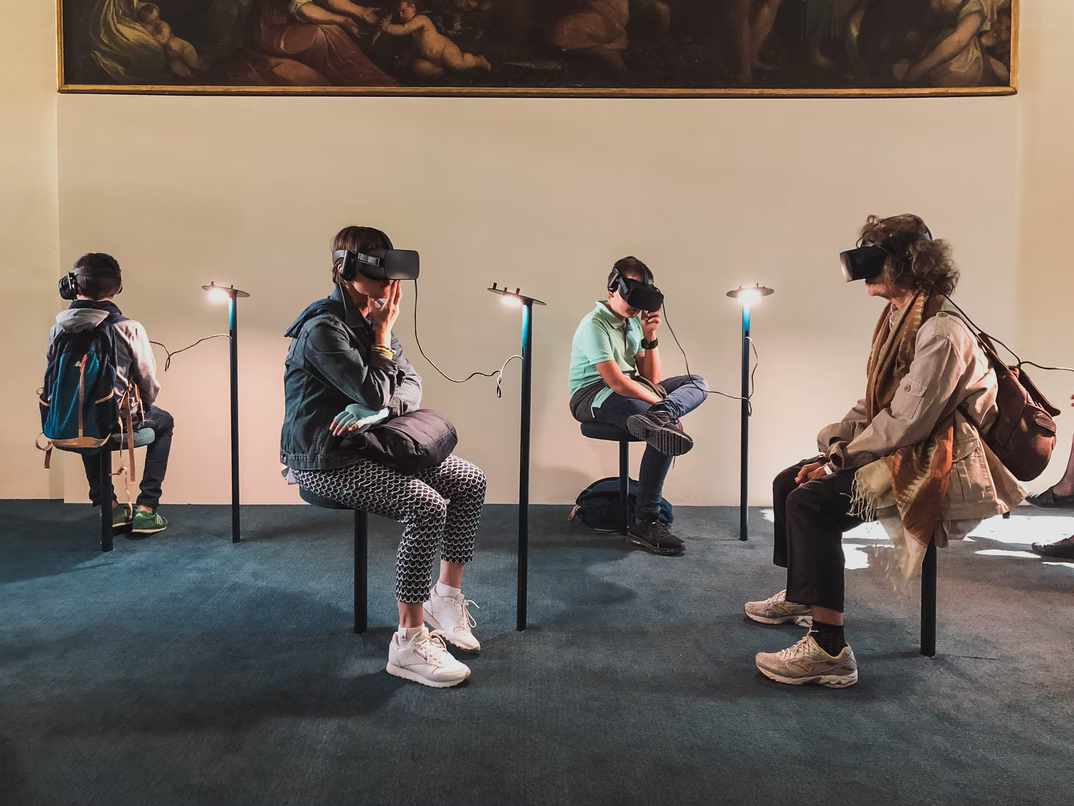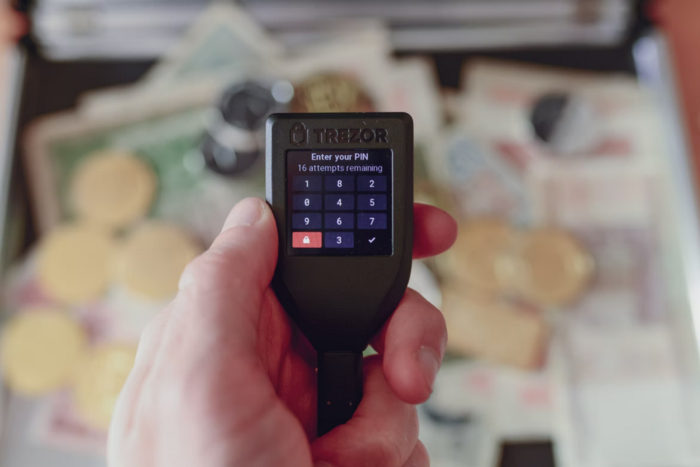The Metaverse, NFTs, and the Future of the Internet

It would be difficult to deny that the way we interact with the world around us has changed drastically since the rise of the World Wide Web, and later of Web 2.0. Uber rides, Zoom calls, job applications via LinkedIn, and instant grocery delivery are all now essential parts of our everyday lives.
New devices, of course, have aided in this met morphosis: The personal computer revolutionized the way we access all kinds of information, from pancake recipes to financial news. Cell phones, and later smartphones, expanded the reach of our communication, bringing an entire connected world to our literal fingertips. Add to all this a huge percentage of the developed world’s workforce transitioning to remote work as a result of the COVID-19 pandemic, one might think that the global shift ‘online’ has come to a climax. However, — if we’re to believe some major announcements made over the last few days — things may only just now be getting started.
On October 28, Facebook founder Mark Zuckerberg announced his company’s rebrand to ‘Meta’. In his pre-recorded video presentation — which included a look at some neat-looking AR goggles and the concept of 3D virtual homes and offices — Zuckerberg explained that this was all about bringing his company into the next generation of the internet. Or, as the official press release puts it: “Meta’s focus will be to bring the metaverse to life…”
What is the “Metaverse ©?”
At this early stage, what the metaverse is (or will be) largely depends on who you ask. To a social media person like Zuckerberg, it can be defined, essentially, as another level of social media.
On sites like Myspace — or on ‘The Facebook’ at its beginnings — users interacted in what was really just a simple, two-dimensional, world. We could upload a picture of ourselves and a few words of description to our profiles. That was about it.
However, as users have become accustomed to posting regular updates about themselves over the last few decades, things have become more sophisticated. Now, it is not uncommon for a single individual to have a set of profiles online that includes many gigabytes of photos, videos, and text. This is all supplemented by massive quantities of metadata (in very basic terms, the records of the content that you view online). As a result, our online lives are already becoming more and more inseparable from our offline ones.
Ultimately, platforms today have access to all the information they need to create a very realistic digital representation — digital avatar and all — of each and every user. The idea is that we, in what is being referred to as the “next generation of the internet” or “web 3.0,” will increasingly live our lives through these virtual ‘selves.’
Beyond any grand statements about Zuckerberg’s visionary capabilities, Meta, in our view, is simply Facebook’s attempt to get out ahead of the competition in this global shift to an internet that will be even more interwoven into our day to day.

The first step to joining Meta’s Metaverse will be to generate your own avatar based on your uploaded pictures and personal preferences. It is through this avatar that Meta intends for you to do the things that you do online today in the metaverse. Want to play cards with friends? Put on a pair of Meta-branded glasses and do so with your buddies’ digital selves at your kitchen table. Have a big meeting? Sit on the couch, and change the channel in your glasses from Netflix to your company’s virtual conference room. You don’t even have to change out of your PJs — your avatar is already dressed the part, in suit and tie and all.
The Issue of Ownership
So far, Facebook’s approach to the metaverse continues to ignore the same core issue that people have been raising about social media for more than a decade already. Big tech has still failed to provide satisfactory answers to questions about who actually owns the information and data that is uploaded or created to social networks. Do you own your data, or does the platform have control?
A growing community of internet users hold the view that ownership of this data should unequivocally be returned to users. This group has long since understood, however, that their approach will not likely fit into Zuckerberg’s or Meta’s vision. Fortunately for them, the development of an own alternative — decentralised — metaverse is well underway.
Making Ownership Work Online
When the primary platforms that dominate the internet of today (Web 2.0) were established, the companies behind them, in a sense, lucked out. During the four-year period from 2002–07 when Linkedin, Facebook, Youtube, and Twitter were all founded, there still existed no good way for the ownership of any kind of digital property, such as personal data, to be recorded.
In those days, internet users almost had a fatalistic relationship with the information they put online. People knew that social media platforms would use their data as they pleased. They begrudgingly conceded to platforms making money with their personal information in exchange for convenience, the ability to network, and entertainment.
This trend continued as the internet became a larger part of our everyday lives. Already by the late 2010s, e-commerce — which depends on easy access to user data to be able to operate — had reached universal adoption. In the background, however, a movement for sovereign ownership of online data was just starting to gain steam, and the technology that would make this possible was, gradually, reaching maturity. The technology to which we’re referring, of course, is blockchain.
First deployed in 2009 as the underlying infrastructure for the world’s first cryptocurrency (Bitcoin!) this “distributed ledger technology” finally made it possible to establish real ownership over a digital representation of value, fully online. With time, and with gradual technological advancement, this functionality would expand to other forms of property.
How Property Went “On-Chain”
When Satoshi Nakamoto first published the Bitcoin white paper in 2008, he succeeded in establishing a way for people to carry out transactions online without having to rely on offline financial institutions like banks or other third parties (i.e. fintech like PayPal). This was a massive breakthrough for data rights — Internet users could finally create value online, and profit from it themselves!
Of course, the impact of Nakamoto’s invention was mostly ignored by the public for the first few years of Bitcoin’s existence. Alternative cryptocurrencies (“Altcoins”) like Litecoin, Ripple, Dash, came along offering — with slight technical improvements like increased transaction speeds and greater scalability — largely the same functionality as Bitcoin. Then, in 2015, the Ethereum project proposed the novel concept of a Turing-complete blockchain. This would change everything.
Without getting too technical, Ethereum became the first blockchain network with the ability not only to validate simple transactions, but also more complicated contractual relationships through pre-programmed agreements, called ‘smart contracts.’ Smart contracts offer a wide variety of potential use cases, including the transfer of non-monetary property from one person to another, entirely online. In one fell swoop, it became possible to ‘tokenize’ just about anything.
The first cryptoasset (‘token’) issued on the Ethereum network, Ether (ETH), served as an example of how this would work. Basically — in addition to representing the value people give to it when it is traded for other currencies, goods, or services — Ether has a pre-programmed ‘utility,’ or use-case. In other words, Ether is programmed to work as a voucher that can be exchanged for computing resources on the Ethereum blockchain. Anybody who wishes to use Ethereum to run their own smart contracts needs to pay a ‘gas’ fee, in Ether, to the network.
Since that time, literally thousands of startups, companies, and other organizations have issued their own tokens by running smart contracts on Ethereum or on competing networks, including Cardano, Polkadot, and Solana. By creating their own tokens, issuers have become able to make legal digital representations of practically anything they want. They just need to be able to write the value they intend to represent into a smart contract.
For instance, these tokens are often issued by companies to represent discounts for their services (the voucher utility token model). Many decentralized finance (DeFi) projects issue tokens that can be used to pay fees on their platforms. Other organizations have issued tokens that represent the right to vote about changes to the platform (the governance model), and quite a few major companies and decentralised organizations have issued so-called ‘stablecoins’ (i.e., USDT, USDC, DAI), which cryptoassets designed to hold a price equivalency to some currency or some other off-chain asset.
Tokens have even been issued that represent securities, like shares in a company or debt. These ‘security tokens,’ function in much the same way as do traditional stocks and bonds, only with the added benefits brought on by their natively digital format.

The Digital Ownership of Everything Else
By 2017–18, the emerging ‘crypto industry’ had fairly well figured out how to reliably tokenize basically all financial instruments, from currencies to futures contracts. In the background, however, several projects had begun developing ways to represent the ownership of everything else using blockchains.
Fundamentally, all property can be divided into two categories: fungible and non-fungible assets. The things discussed above — money, cryptocurrencies, utility tokens, stablecoins, and security tokens — are all fungible, meaning they can be exchanged one for another. One dollar is always equal to one dollar, one ether to another ether, and a single DAI always equals a single DAI.
The same is not true for things like a digital piece of art, your house, a song by Kanye West, the Mona Lisa, or the jersey Ronaldo wore at the world cup. While all of these things could be sold or purchased in exchange for some amount of a currency (crypto or fiat), they cannot be exchanged for another of themselves, since an equivalent does not exist. These assets are non-fungible.
In the beginning, tokenizing non-fungible assets represented somewhat of a challenge. It was understood right away how it could work from a technical perspective — the first ‘non-fungible tokens’ (NFTs) had been issued on the Ethereum network as early as 2015) — but the overall infrastructure for the trading and custody of NFTs took some time to develop.
While work is still underway to solve the custodial problem for real-world assets that have been tokenized, an entire economy of NFTs that represent digital assets began to flourish already by the start of 2020. Supported by NFT marketplaces like Rarible, ‘multiverses’ like Decentraland, and gaming platforms like Axie Infinity, digital artists, graphic designers, and game developers can now create, own, and make a profit from virtual realities online. The “decentralized metaverse” is upon us.
The Decentralized Metaverse
Digital art and video games are all well and good, but one question still stands: How is blockchain technology and the community behind it meant to build something that can actually compete with the metaverses of companies like Meta and Microsoft, which each have billions of dollars at their disposal?
The answer to this question is two-fold.
First, investment markets currently seem to indicate that projects in the “decentralized metaverse space” are already on the verge of possessing comparable capital to that of Big Tech. FAANG companies — which have already reached peak adoption — have a combined market capitalization of about $7.5 trillion. Crypto — which is still very far from mass adoption — recently surpassed a total market cap of $3 trillion. Given the emerging asset class’s continuously exponential growth over the last 13 years, there is certainly cause for optimism.
Second, in terms of just a basic understanding of human nature, Web 3.0 simply can’t exist unless its users have the ability to own the things they create. Who would want to contribute so much time and energy to building an entire universe, only to give their property away to Mark Zuckerberg or somebody like him?
Moreover, the gradual movement to include digital representations of physical things will require the existence of an online universe that is independent of centralized corporate ownership. People want to be sure that they have full control over their things while still enjoying the benefits of digital ownership, such as ease of transfer and liquidity.
Investing in the Metaverse: Key Principles

Here at Altercap, we specialise in helping private individuals and companies get started with cryptocurrencies and other digital assets. Over the last few days, following Facebook’s announcement, we have received numerous inquiries regarding NFTs and the ecosystems that surround them. In response to this growing interest, we have prepared this list of three key principles that investors might want to consider as they evaluate potential opportunities in this space:
Principle 1: Value lies in the basic infrastructure
At this early date, the greatest amount of value for investors may not be in the NFTs, but instead in the basic infrastructure that will make up the growing Web 3.0 ecosystem. This includes the blockchain networks themselves, DeFi protocols, and NFT marketplaces.
If one were to think of these opportunities as a pyramid, the foundation would without a doubt be the blockchain networks on which NFTs are issued. The logic, here, is simple: The more NFTs issued on a blockchain, the more that network’s native token is likely to be worth. As of the writing of this article, Ethereum dominates in terms of NFT issuance.
One should also keep an eye on other networks, including Cardano, Solana, and Polkadot. Each of these blockchains offers certain technological advantages over Ethereum that may grow in impact as the networks become larger.
The next layers in our pyramid are the marketplaces and NFT tools. Many of these companies and organisations offer utility tokens for purchase on cryptocurrency exchanges. Further, the tokens issued by large decentralized multiverse and gaming platforms like Decentraland, The Sandbox, and Axie Infinity may be of interest.
It may also be worthwhile paying attention to DeFi protocols, which have already begun to provide the decentralised financial systems on which the metaverse is beginning to operate. These range from stablecoins, to lending platforms where NFTs can be put up as collateral.
Principle 2: Invest in what you know
In crypto, there is an entire metaverse of opportunity for investors. This means that you don’t need to jump in headfirst. We’re still early, and there is plenty of time to find the very best returns on investment for your portfolio.
We recommend going slow for now. Follow a bit of the investing advice given to us by the Oracle of Omaha himself, Warren Buffett: “Never invest in a business you cannot understand.” Take your time and look for projects connected to your field of specialization or training. If you can’t find one yet, it’ll be sure to arrive soon.
For example, if you work in IT, you may be interested to know that NFTs are already being issued that represent domain names. This, of course, is a major step towards the development of a truly decentralised web. If you’re more legally- or business-minded, check out the projects that are minting NFTs that represent intellectual property, real estate, and even things like concert tickets. Financial specialists might want to look into tokenized yield-bearing assets and derivatives. These things, too, are being transformed by NFT technology.
Principle 3: Learn the basics of crypto
The difference between holding cryptoassets (including cryptocurrencies, utility tokens, and NFTs) and other forms of property like bank deposits and stocks is the responsibility it places on the owner. Assets issued using a blockchain are by definition sovereign. This means you need to be prepared to look out for their security, whether this be by setting up your own custody strategy or by entrusting them to a trustworthy third party.
Before you get started investing in any kind of crypto, it is essential that you get informed as much as possible. Our goal at Altercap has been, since our founding, to streamline this process for busy individuals and companies.
To this end, we regularly publish FAQs, guides, and articles like this one to our Knowledge Base. If you are ready to get started, feel free to contact our team of crypto-financial specialists, who will guide you through the entire process.